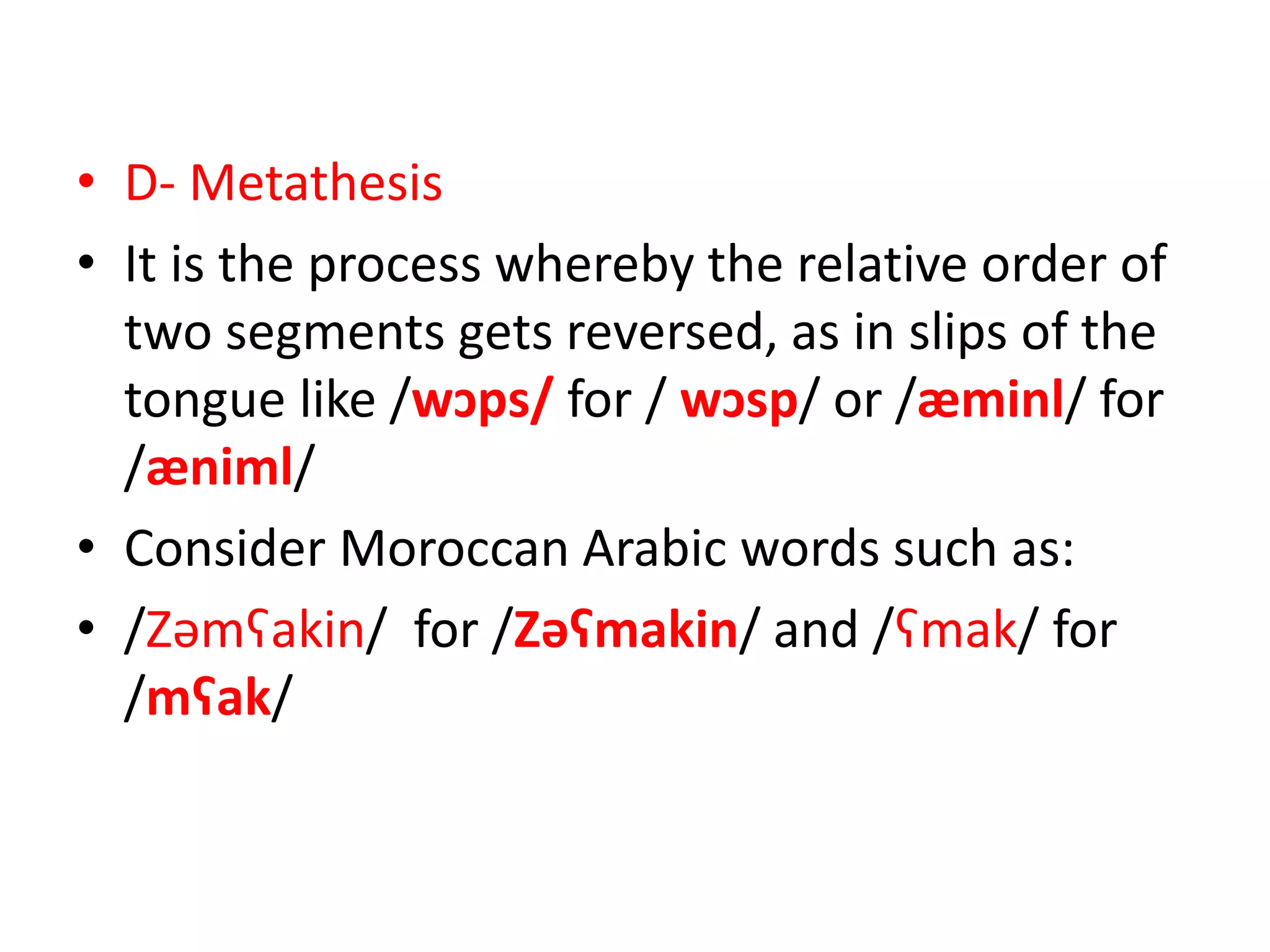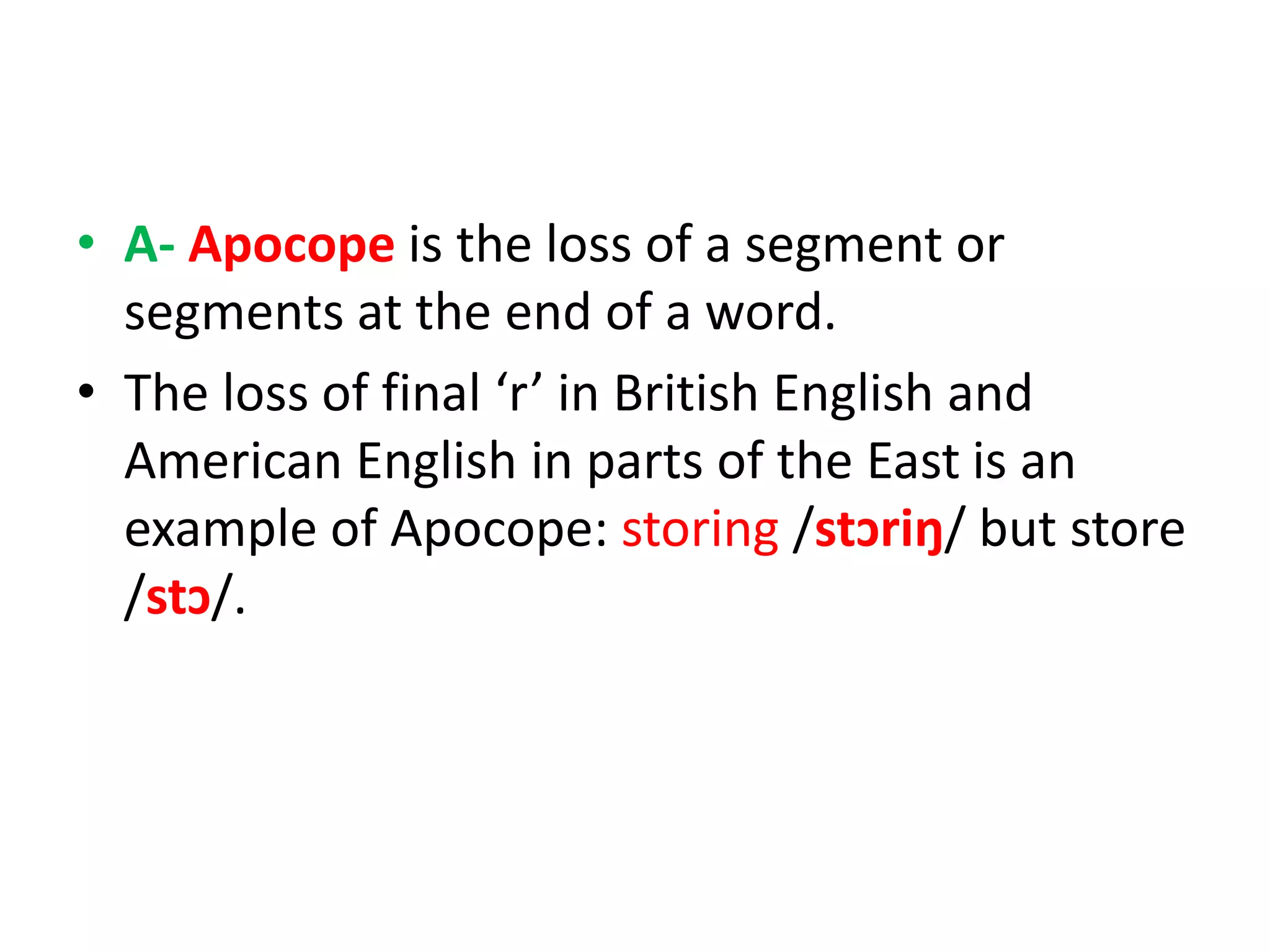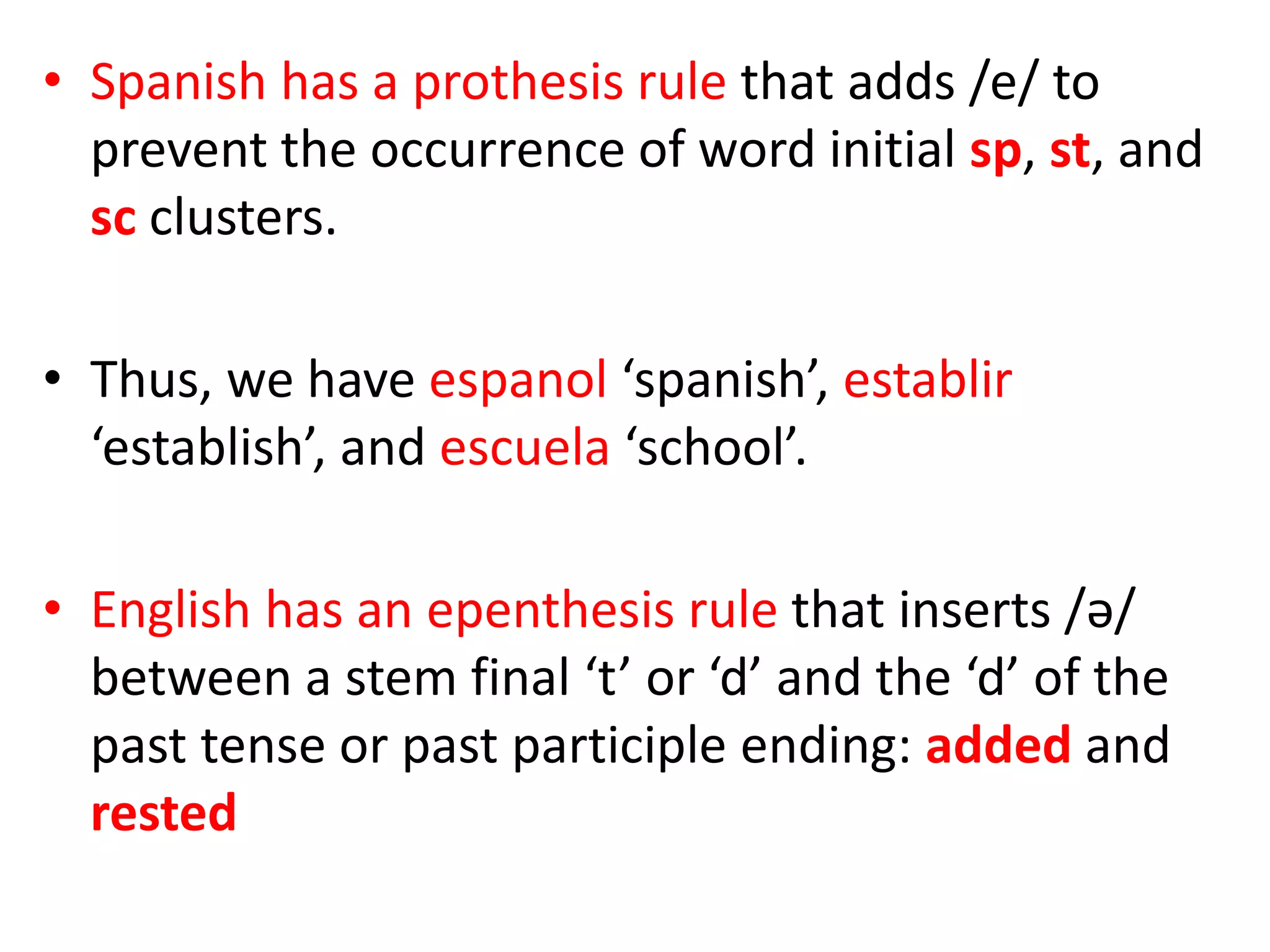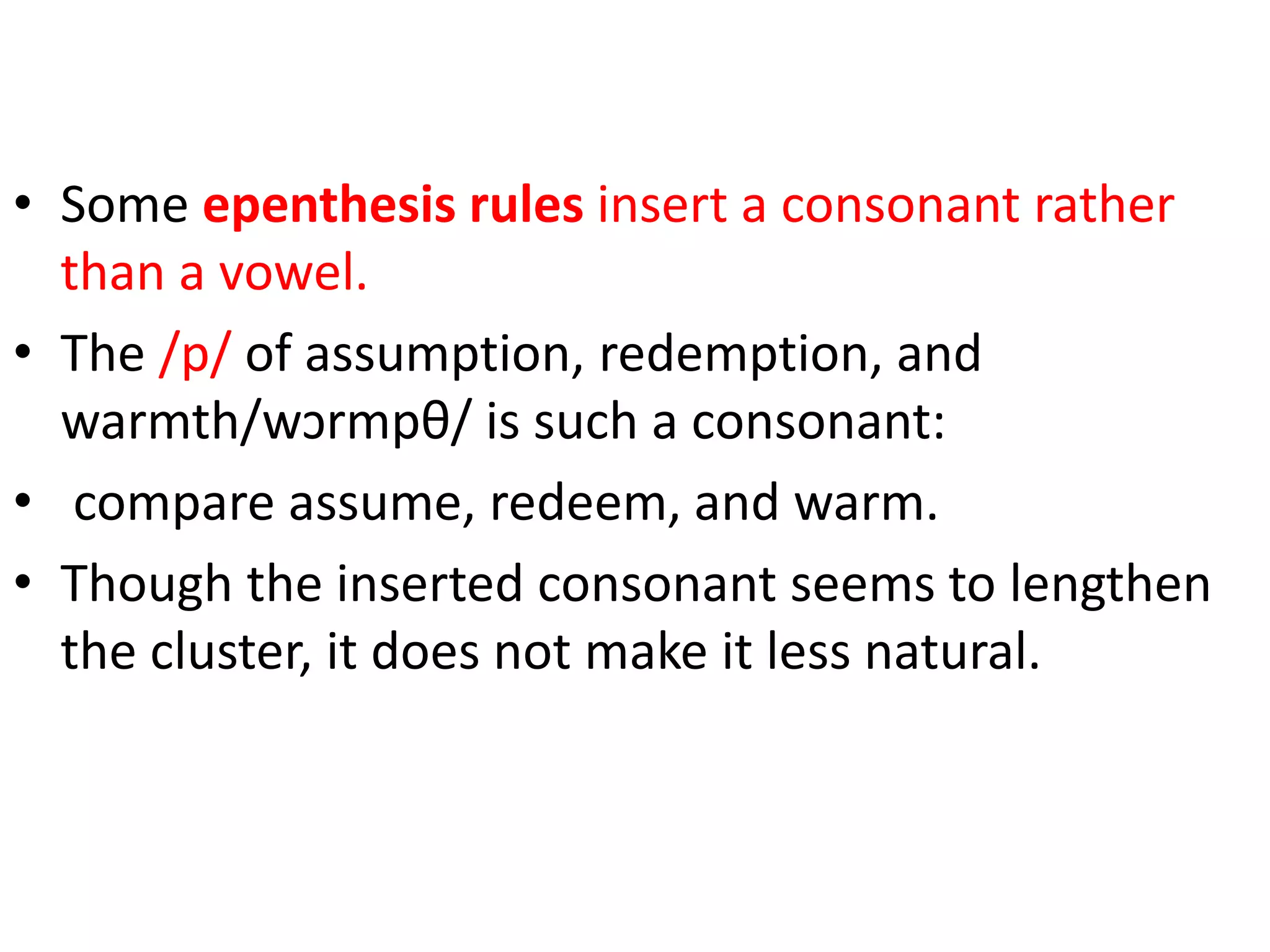This document discusses various phonological processes including assimilation, dissimilation, elision, metathesis, apocope, syncope, prothesis, and epenthesis. Assimilation is when a sound changes to become more like an adjacent sound, such as /n/ becoming dental before another dental sound. Dissimilation is the opposite process. Elision, metathesis, apocope, and syncope refer to the loss or reordering of sounds. Prothesis and epenthesis involve adding sounds, such as adding a vowel to break up consonant clusters. Secondary articulations like labialization, palatalization, and velarization can help explain many phonological processes.
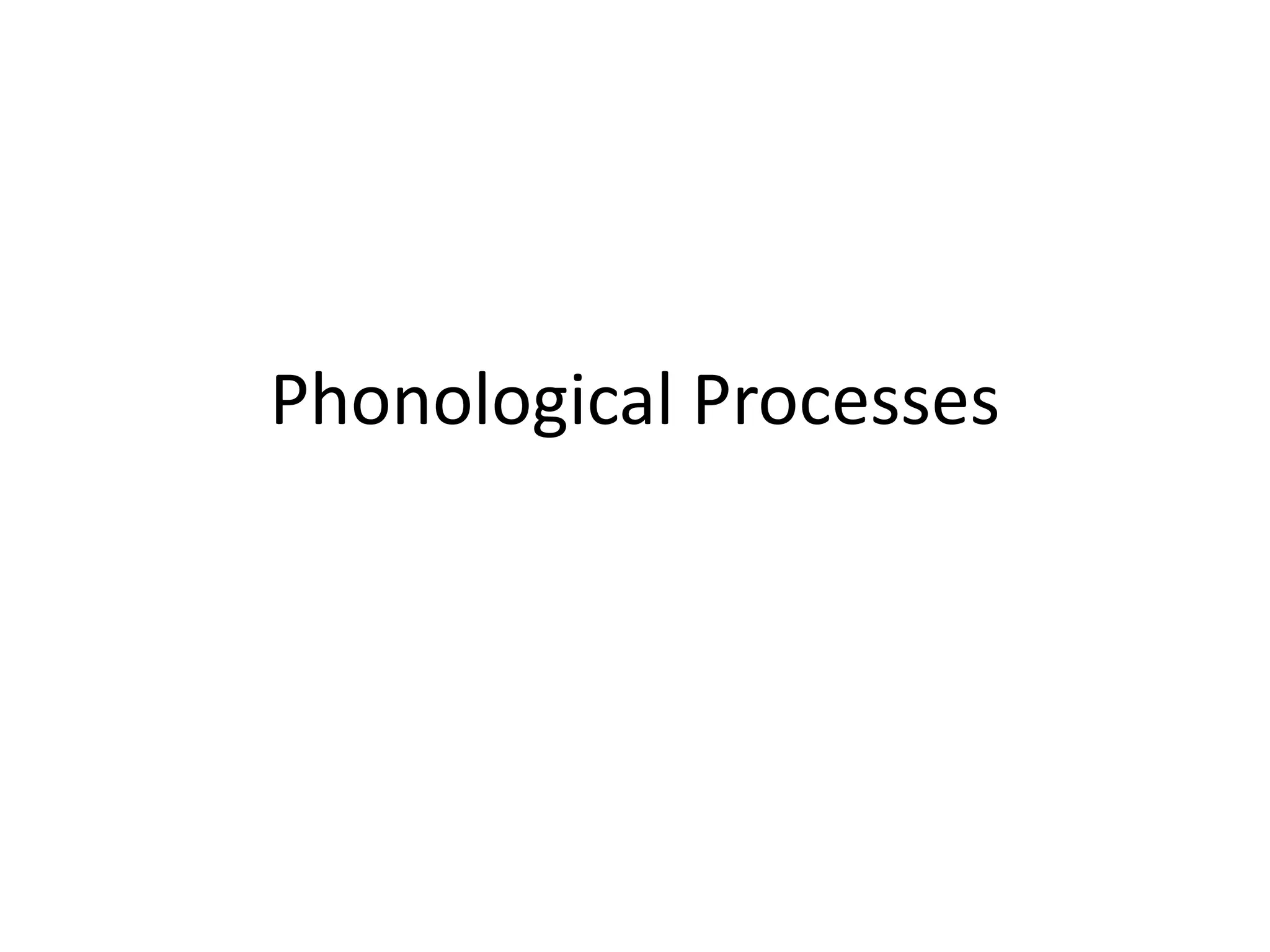

![• Other examples of Assimilation:
• /l/ is realised with labiolisation when it occurs next
to a rounded vowel,e.g. in lose and fool transcribed
phonetically as:
• [l̫u:z] [fu:l ̫]
• A vowel may be realised as voiceless when it occurs
between two voiceless sounds in an unstressed
syllable (remember that all vowels are by nature
voiced): e.g. in the word potato, the first vowel is a
schwa and placed between 2 Voiceless sounds: /p/
and /t/; therefore, it will be devoiced: /pə̥teitəu/
(Notice the small circle, as a diacritic below /ə/ to
show its devoicing).](https://image.slidesharecdn.com/phonologicalprocesses5-230408143306-544c44f0/75/Phonological-Processes-5-pptx-3-2048.jpg)
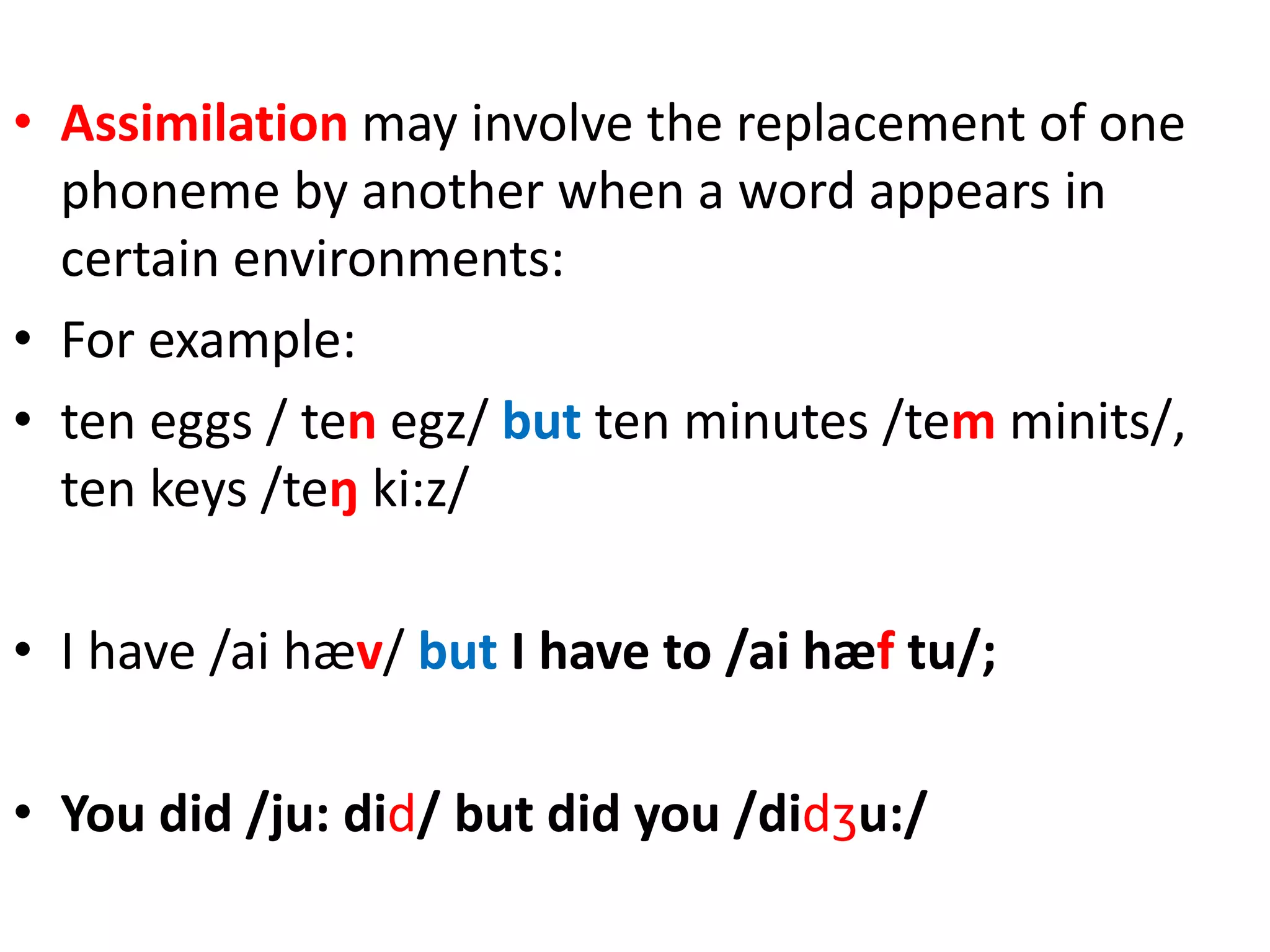




![• Secondary Articulations:
• 1- labialization:
• It involves lip rounding and a high back tongue
position. Labializing a consonant causes it to take
on a w-like quality. The words ‘quench, quick and
quart all begin with K’s which are labialized.
• Labialization is represented by a superscript [ʷ ].
• In our examples the first sound will be transcribed
phonetically as [kʷ ͪ]; it is both labialized and
aspirated.
• Note: the adjectives labialized and labial must be
kept distinct. The stop /p/ is labial but not
labialized. In ‘pueblo’ it is aspirated and labialized
[pʷ ͪ].](https://image.slidesharecdn.com/phonologicalprocesses5-230408143306-544c44f0/75/Phonological-Processes-5-pptx-9-2048.jpg)
![• 2- Palatalization
• Consonants may also be modified by extending the
body of the tongue into the high front position.
• This produces a y-like modification called
palatalization.
• Examples:
• The initial sounds of few, hue and mule are all
produced in this manner.
• Compare these sounds with the initial sounds of
fool, hoot, cool, and moon, all of which are made
without palatalization.
• A raised ʸ directly after a symbol indicates
palatalization. The palatalized consonants in our
examples will be represented as: [fʸ], [hʸ],[mʸ]](https://image.slidesharecdn.com/phonologicalprocesses5-230408143306-544c44f0/75/Phonological-Processes-5-pptx-10-2048.jpg)
![• 3- velarization
• Definition: It is achieved by raising the back of the
tongue toward the velum during articulation.
• Example:
• In English the /l/ sound is pronounced in different
ways according to the environment where it is
found.
• In leap and late it is clear ( a pure alveolar lateral)
but in people it is dark ;it is modified in the way
specified in the definition.
• Velarized sounds are represented by adding the
diacritic [ ̃] or a slash mark to the symbol for the
sound in question. Thus [ ɫ ] and [ Ɨ] indicate a
velarized /l/.](https://image.slidesharecdn.com/phonologicalprocesses5-230408143306-544c44f0/75/Phonological-Processes-5-pptx-11-2048.jpg)
![• 4- Pharyngealization
• Definition:
• Consonant sounds may be modified by constricting
the pharynx during articulation. This secondary
articulation is called pharyngealization.
• When a secondary pharyngeal constriction is
superimposed upon a consonant articulation, the
diacritic symbol [ ̃] is used. This is the same diacritic
used to denote velarization. It is possible to use the
same diacritic for these two secondary articulations
because velarized and pharyngealized sounds are
very similar and do not seem to be differentiated in
any language. Some put a dot below pharyngealized
sounds: [ḷ]](https://image.slidesharecdn.com/phonologicalprocesses5-230408143306-544c44f0/75/Phonological-Processes-5-pptx-12-2048.jpg)

